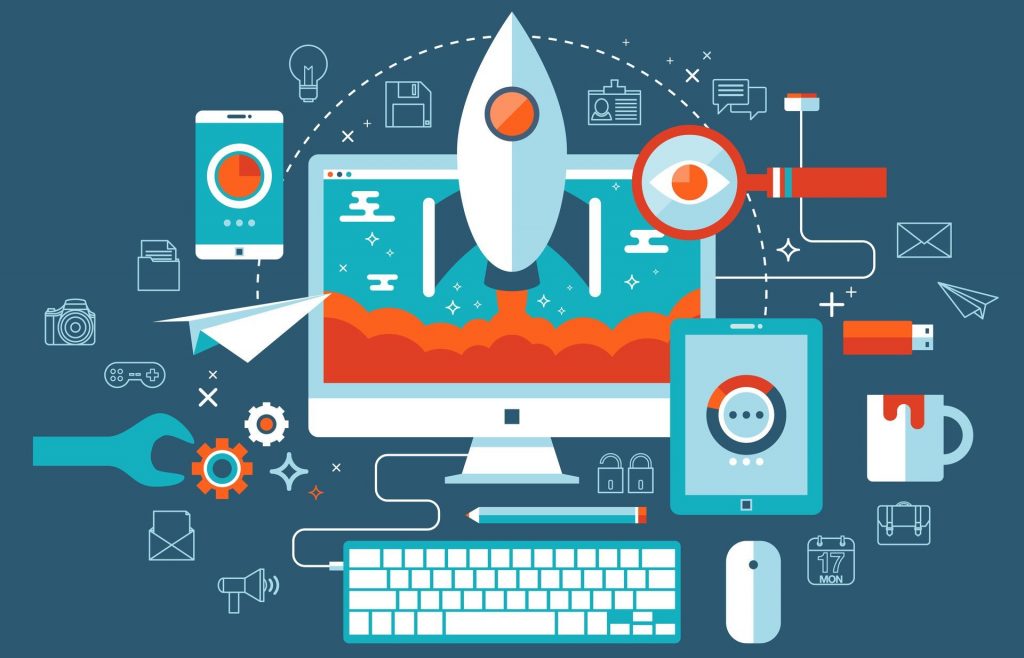As 2020 comes to an end, people everywhere have been reflecting and pondering upon what has- and hasn’t happened this year. There is no doubt the Novel Coronavirus pandemic has been the defining feature of this year, but researchers of the tech industry have also been looking into what technological advances this year has brought forward, providing us with short bursts of hope in these trying times.
A new report posted by the World Economic Forum and Scientific American Magazine reveals the top ten emerging technologies of this virus-ridden, locked-down year:
1. Microneedles for painless injections and tests
Microneedles are needles that are no more than the width of a human hair and can penetrate the skin without setting off the pain receptors underneath. They can be attached to syringes, patches, or even be mixed into medicated creams.
This revolutionary piece of technology can potentially make blood tests and other injections completely pain-free and much less dangerous in terms of catching infections. Blood tests can be done at home using these needles and their samples can be sent to the lab or be analysed on the spot. These needles do not require any special training or expensive equipment and can therefore be used in under-developed areas of the world.
2. Sun-powered chemistry
The main driving factor behind this kind of technology is that sunlight, an energy resource available in abundance, can be used to convert waste carbon dioxide into useful chemicals; these chemicals usually rely on the burning of fossil fuels to drive their synthesis. Recent developments in sunlight-activated catalysts that could potentially be used to convert our waste into useful chemicals can prove to be a pivotal step towards establishing solar refineries. These chemicals can then be used to make anything from medicines to detergents, fertilisers, and textile materials.
3. Virtual patients
This piece of technology is revolutionary, especially in these trying times when many of the world’s biggest countries work tirelessly to find a vaccine for the Coronavirus. This technology takes high-resolution pictures of human organs, analyses them, and send the data to a complex mathematical model of the mechanisms that control that organ’s function. Computer algorithms then resolve the generated equations and essentially create a virtual organ, of sorts, which behaves exactly like the real thing. These virtual organs can potentially replace humans in clinical trials and the likes which could prove vital to synthesising vaccines to viral and contagious infections.
4. Spatial computing
Spatial computing is essentially the next step in the fields of Virtual and Augmented Realities (VR and AR). While these technologies digitise objects and allow sensors and motors to react to one another to create a digital representation of the real world, Spatial computing aims to go even further by adding spacial mapping. This will let a computer coordinator track and fully control the movements of a person as they move and interact with the digital and physical worlds. This technology could also have numerous uses in the fields of healthcare, transportation, etc.
5. Digital medicine
Do not let the name mislead you; computers and pieces of code have yet to reach a level where they can replace physical medications. However, Digital technologies and applications that monitor health conditions of patients and administer therapies while managing referrals to doctors have made a starring appearance this year. Smart wearables like smart watches can now take Electro-Cardiogram readings, detect irregularities in your breathing and heart rate, and inform you when your blood oxygen levels are low. Pills can now have sensors in them that can send real time internal data to doctors and analysts to monitor numerous kinds of health conditions.
6. Electric aviation
Electric jet engines and the likes could potentially do wonders for carbon emission levels worldwide. They can also help in reducing the cost of fuel and the levels of noise pollution. Around 170 projects in this field are being carried out currently. Airbus, NASA, and many other aviation-related companies are working on electric propulsion. These are being developed mainly for private, corporate, and commuter travel. While commercial electric jets may somewhat be a thing for the not-so-near future, Airbus have said that they could have a 100-passenger electric plane ready by the year 2030.
7. Lower-carbon cement
Cement, a key component in making concrete which, in turn, is a key component in the construction of buildings and building-like structures, requires a lot of fossil fuels to burn in its making which, in fact, accounts for 8 percent of the Carbon Dioxide emissions around the world. Researchers are now working on lower-carbon emitting approaches by either tweaking the recipes, applying carbon capturing and reusing technologies, as well as taking cement out of concrete altogether. This could be crucial towards saving our ozone layer and keeping our atmosphere clean.
8. Quantum Sensing
Quantum Sensing, a newfound breakthrough in technology could potentially be used in various applications like self-driving cars and brain activity monitors. These sensors work on highly detailed images with extreme levels of precision because they make use of the quantum nature of matter. Up until now this technology has been too expensive for smaller applications. Developments made this year, however, suggest that these technologies could potentially be available at a more affordable price very soon.
9. Green Hydrogen
Green hydrogen is the combustion of hydrogen through electrolysis- electrolysis only releases water as a by-product. Earlier this year, it was predicted that the green hydrogen market will be worth 12 trillion dollars by the year 2050 because it could potentially play a key role in decarbonising combustion reactions worldwide, especially in applications such as shipping and manufacturing, where electrolysis isn’t easy to apply because it requires high-energy fuel.
10. Whole-genome synthesis
Improvements are being made in the fields of genetic sequencing; these improvements could potentially allow for a larger amount of genetic material to be printed to alter genomes more extensively. This can be extremely useful in synthesising vaccines. It could also help sustainably produce chemicals from biomass and waste gases or design pathogen-resistant plants to better crop yields. This could also help in the discovery for cures to genetic diseases.
If you have been reading carefully, you will notice a pattern between these technologies; Most of them, if not all, have potential applications in the fields of healthcare and medicine. That is simply because the world, including the technological industry, is doing all there is they can do to better the lives of people in these trying times and they are working hard at finding a possible cure to the Coronavirus as soon as possible.
Source: World Economic Forum




 Pfizer CEO sold more than $5m worth of stock on day of vaccine announcement
Pfizer CEO sold more than $5m worth of stock on day of vaccine announcement